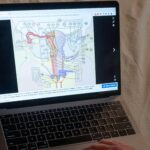Introduction
Dandy-Walker Malformation (DWM) is a rare brain condition characterized by an enlargement of the fourth ventricle and an underdeveloped cerebellum. It is crucial to understand this condition for early diagnosis and effective management. This article will explore the causes, symptoms, diagnosis, and treatment options related to Dandy-Walker Malformation, making it accessible for readers interested in health topics.
What is Dandy-Walker Malformation?
Table of Contents
Dandy-Walker Malformation is a congenital brain malformation that affects the development of the cerebellum, the part of the brain responsible for coordination and balance. In individuals with DWM, the fourth ventricle, a cavity that contains cerebrospinal fluid, is enlarged. This condition can lead to a variety of neurological issues, depending on the severity and associated complications.

Causes and Risk Factors
The exact cause of Dandy-Walker Malformation is still not fully understood. However, several factors may contribute to its development, including:
- Genetic Factors: Some cases of Dandy-Walker Malformation are linked to genetic abnormalities. These may include chromosomal syndromes or inherited genetic disorders.
- Environmental Factors: Certain environmental exposures during pregnancy, such as infections (like rubella or cytomegalovirus) or substances like alcohol, may increase the risk of developing this malformation.
- Associated Conditions: Dandy-Walker Malformation may occur alongside other congenital conditions, including spina bifida, heart defects, and genetic syndromes such as Down syndrome or Turner syndrome.
Symptoms
Symptoms of Dandy-Walker Malformation can vary widely among affected individuals. Common symptoms may include:
- Developmental Delays: Children with Dandy-Walker Malformation may experience delays in reaching developmental milestones, such as sitting up, walking, or talking.
- Motor Skill Difficulties: Coordination and balance issues can affect physical development and mobility. Children might have trouble with activities like running or climbing stairs.
- Seizures: Some individuals may experience seizures, which can vary in frequency and severity. These can be focal (affecting one area) or generalized (affecting the whole brain).
- Increased Head Size: Infants with Dandy-Walker Malformation often have an unusually large head (macrocephaly) due to increased cerebrospinal fluid pressure.
- Other Neurological Symptoms: Depending on the severity, some may experience headaches, vision problems, or difficulties with attention and learning.

Diagnosis
Diagnosing Dandy-Walker Malformation typically involves imaging studies. Key diagnostic tools include:
- Ultrasound: A prenatal ultrasound may detect Dandy-Walker Malformation before birth. However, not all cases are identified during this stage.
- MRI or CT Scan: After birth, an MRI or CT scan can provide detailed images of the brain, confirming the diagnosis and assessing the extent of the malformation.
- Neurological Evaluation: A comprehensive neurological examination by a specialist may also be conducted to assess the child’s developmental progress and identify any associated complications.
Treatment Options
Treatment for Dandy-Walker Malformation depends on the symptoms and severity of the condition. Possible treatment approaches include:
- Monitoring: Regular check-ups to monitor growth and development may be sufficient for mild cases. Healthcare providers may track milestones and ensure that any developmental delays are addressed promptly.
- Therapies: Physical therapy, occupational therapy, and speech therapy can help improve motor skills, communication abilities, and daily living activities. These therapies are tailored to each individual’s needs.
- Medication: If seizures are present, antiepileptic medications may be prescribed to manage symptoms effectively.
- Surgery: In severe cases, surgery may be necessary to relieve pressure on the brain or correct associated issues, such as hydrocephalus, which can occur when cerebrospinal fluid builds up. This often involves placing a shunt to drain excess fluid.
Living with Dandy-Walker Malformation
With early intervention and appropriate management, many individuals with Dandy-Walker Malformation can lead fulfilling lives. Support from healthcare professionals, educators, and family members plays a crucial role in optimizing outcomes.
- Educational Support: Many children with Dandy-Walker Malformation benefit from individualized education plans (IEPs) in school to help address learning challenges.
- Community Support: Connecting with support groups or communities focused on Dandy-Walker Malformation can provide resources, emotional support, and valuable information for families navigating this condition.
Conclusion
Understanding Dandy-Walker Malformation is essential for recognizing its symptoms and seeking timely medical advice. Early diagnosis and tailored treatment can significantly improve the quality of life for affected individuals. If you need more information or help with your health journey, feel free to contact us at Health Authentica.










